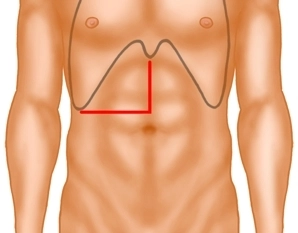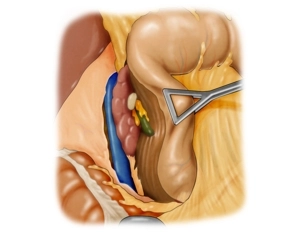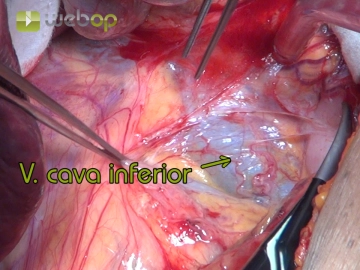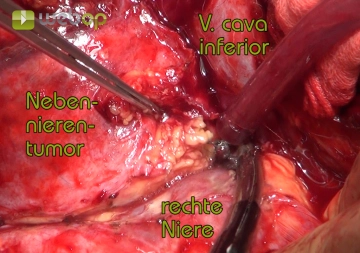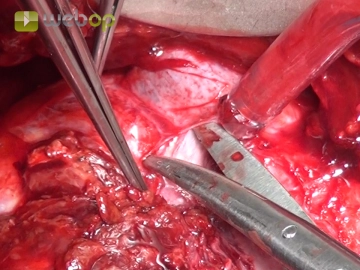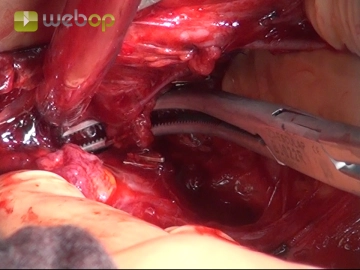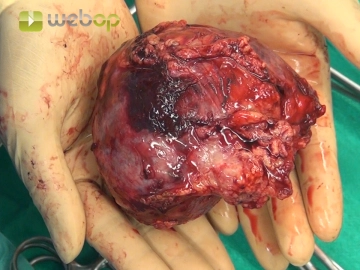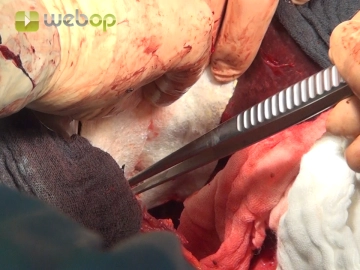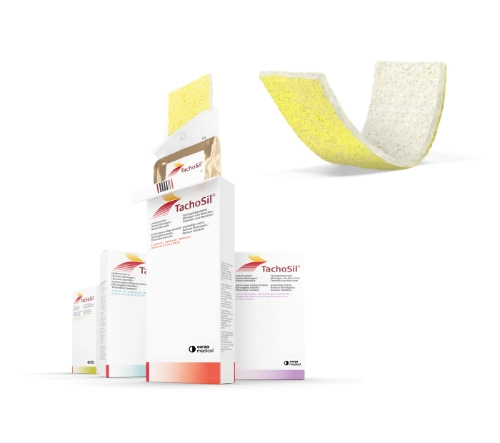Transverse right laparotomy at the level of the umbilicus. After transecting the right rectus muscle with bipolar scissors and opening the peritoneum extend the incision in the midline to the xyphoid process. Explore the intestinal organs to rule out other metastases and confirm resectability.
Active local hemostasis and sealing
TachoSil® Versiegelungsmatrix
TachoSil® wird bei Erwachsenen und Kindern ab einem Alter von 1 Monat zur unterstützenden Behandlung in der Chirurgie zur Verbesserung der Hämostase, zur Unterstützung der Gewebeversiegelung und zur Nahtsicherung in der Gefäßchirurgie angewendet, wenn Standardtechniken insuffizient sind. TachoSil® wird bei Erwachsenen zur unterstützenden Versiegelung der Dura mater angewendet, um postoperative Liquorleckagen nach neurochirurgischen Eingriffen zu vermeiden.
Produktwebsite TachoSil®
TachoSil® Fachinformation 05-2025 (354.1 kB)


